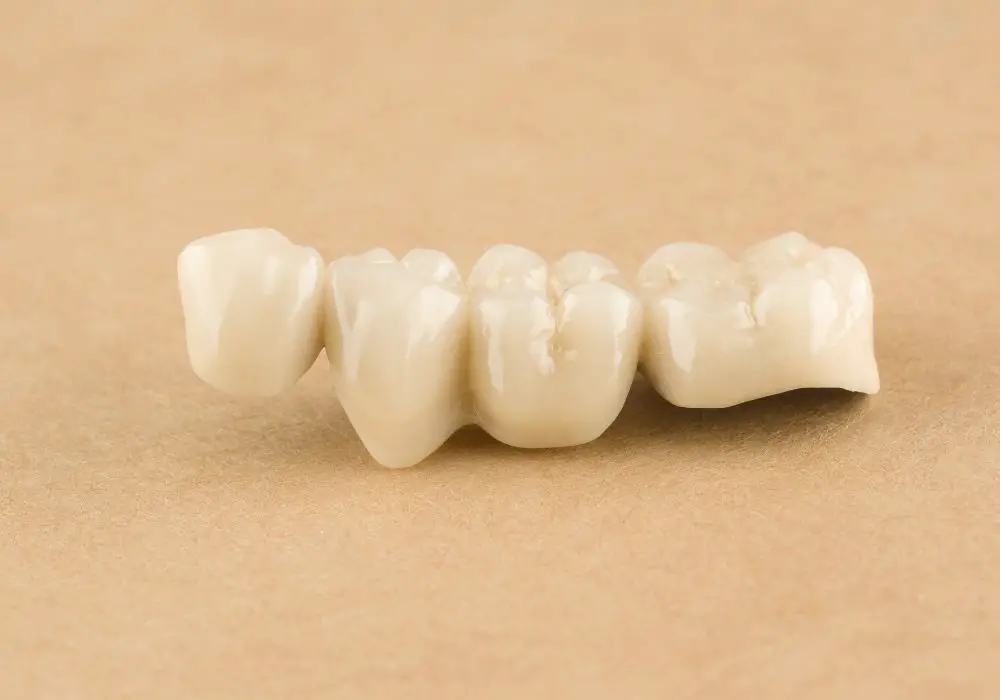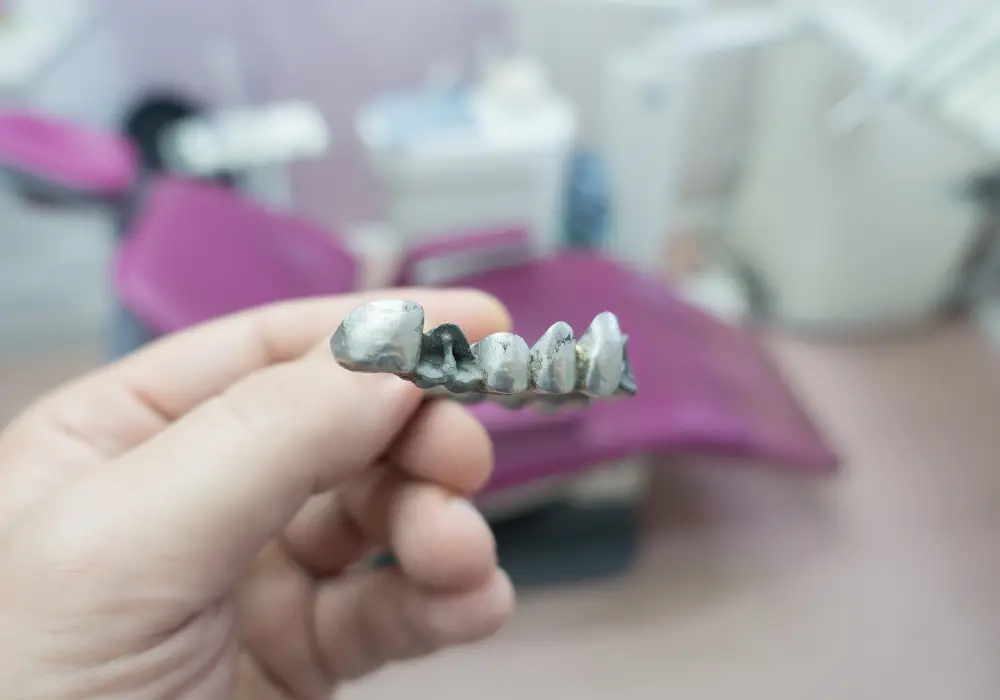If you’re missing teeth or plan on having some removed, a dental bridge can help cover that gap. Because there are other options to explore, it’s important to understand the costs involved and how insurance considers this procedure before making your choice.
Keep reading to learn what affects dental bridge costs, what insurance will cover, and what you can use to supplement your coverage.
How Much Does Dental Bridge Cost With Insurance?
If your insurance plan covers dental bridges, it usually only pays for 40 to 50 percent of the bridge cost. This brings the original $2,000 to $5,000 price tag down to $1,000 to $2,500, although the cost of a dental bridge varies greatly depending on your situation.
Insurance also keeps costs low by covering miscellaneous costs like exam fees, x-rays, extractions and more.
Factors for Dental Bridge Cost
The cost of dental bridges depends on a few factors:
- Cost of living in your area
- Type of bridge
- Work needed
While all of this determines the original amount of the procedure, what your insurance covers influences how much of this cost transfers to you. This can be difficult to pinpoint because there is so much variation in dental coverage, so we suggest consulting your individual plan for specific details.
Cost of Living/Geographic Location
Where you live affects your cost of living, as well as the overhead costs of your dentist. They need to charge enough to keep their office open, so costs like rent and utilities trickle down to their patients.
Dentists do what they can to minimize these costs, and there shouldn’t be too much variation in any one area, but understand this for major procedures. If you’re trying to find a low-cost dentist, take a look at the average living expenses in their surrounding area.
While it’s not always true, dentists in rural towns, counties, and zip codes usually cost less than those in the city or high-end parts of town, even with the same experience and technology.
Type of Bridge
The type of bridge you choose (or need) affects what you need in terms of:
- Prep work
- Suitable materials
- Technology
You may have some control over this (i.e. choosing composite instead of porcelain), but your condition may limit you to a specific type of dental bridge.
Work Needed
On top of influencing the type of bridge you can get, the amount of work you need done to prepare for the bridge can increase or decrease the final cost.
For example, someone getting a bridge to replace a missing tooth will have a lower bill than someone who needs to first extract their problem tooth to prepare for the bridge.
You may also need to deal with issues on your teeth, gum, or jaw before you can move forward with the dental bridge process. Something like a bone-graft may be needed to support an implant-based bridge.
Insurance Coverage
Dental insurance plans are largely gray areas, with no overarching understanding for what should always be covered or what percentage of costs they’ll take on. In most cases, dental insurance will completely cover routine dental services that minimize more advanced care. This includes:
- Regular checkups
- Routine exams
- Dental cleaning
Other minor procedures, like dental fillings, are also likely to be covered in full up to a certain point. If you need any of this work done before getting a dental bridge, you can usually count on insurance to take care of that cost.
But how much of your dental bridge procedure will insurance cover? It depends on your plan. For a quick answer, call the number on the back of your insurance card and speak to a representative who can explain your coverage limits.
In most cases, you’ll be responsible for the deductible and about 50 to 60 percent of the procedure cost.
4 Types of Dental Bridges

The type of bridge you need or choose is a major contributor to your final out of pocket costs.
| Type of Bridge | Description | Cost (Before Insurance) |
| Traditional | Gap between at least two teeth | $2,000 to $5,000 |
| Maryland (Resin-Bonded) | Less invasive option between two teeth; common for front teeth | $1,500 to $2,500 |
| Cantilever | Bridge with only one supporting tooth | $500 to $1,200 |
| Implant-Supported | Larger gaps; lower long-term risks | $4,000 to $15,000 |
There’s more to consider than the price tag. While this decision is ultimately between you and your dentist, understanding the different types of bridges can help you have that discussion when you go in.
Traditional Bridges
Most dental bridges installed are traditional bridges. They rely on two or more adjacent teeth to support the bridge with dental crowns. The only caveat is that the abutment teeth must be happy and capable of supporting the bridge.
You can lower the cost by choosing a cheaper material, like metal, although that may not be the best option for more visible teeth.
Maryland Bridges
These resin-bonded bridges don’t need an abutment tooth. Instead, the prosthetic tooth is attached to metal wings that secure to the back of your surrounding teeth.This is less invasive than other options and requires less material, allowing you to keep costs lower.
When done correctly, a Maryland bridge shouldn’t interfere with the appearance of your natural teeth, but they can be more noticeable than other tooth replacement options.
Cantilever Bridges
If you only have one healthy tooth or you need to replace a molar in the far back, your dentist may suggest a Cantilever bridge. While they install similarly to a traditional bridge, you only have one abutment tooth.
While they’re less secure than other options, they still maintain a high success rate and keep your final bill low.
Implant-Supported Bridges
The larger price increase may seem like a shock, but bridges supported by a dental implant bring plenty of benefits to the table. They can also cover a larger area than other bridges.
Implant-supported bridges last longer than other types because they’re less likely to harbor bacteria and more effective at distributing pressure. They’re also less likely to contribute to gum disease or recession, and they give the jawbone something to support instead of allowing it to whittle away.
The entire process can take months and requires more preparation and recovery efforts, but most people are pleased with the results.
Supplementing Dental Insurance for Bridge Costs

Because dental insurance is unlikely to cover the entire cost of a dental bridge, you need a plan for the rest. Some people are able to cover this with their own savings, but that’s not your only option.
Some employers provide a Flexible Savings Account (FSA) or Health Savings Account (HSA) for their employees, allowing them to set aside pre-tax contributions that can later be used for qualifying health-related expenses.
An FSA resets at the end of the year, while an HSA carries over. Timing your dental bridge procedure accordingly may allow you to use the bulk of these funds to cover what insurance will not.
Ask your dentist if they offer in-house payment plans or partner with a company that will allow you to finance the remaining cost of the procedure. Lenders that specialize in credit or loans for medical procedures are more likely to approve you, and they may waive your interest cost if you pay off the amount in a certain period.
Low-Cost Alternatives to Dental Bridges
Inability to afford a dental bridge doesn’t mean you’re out of luck; there are a few similar options to consider.
To start, you should deal with the underlying issue, even if you can’t afford the dental bridge. Something like severe decay can easily affect the surrounding teeth, and you should remove the affected tooth to prevent worsening your situation.
Some dentists will allow you to use a temporary bridge for a short time. These will hold you over for a few months, giving you time to save up for a more permanent and secure option.
You may be able to qualify for special payment plans if you choose a more advanced option, like an implant or even a full arch of implants (for more serious loss). This can split up your payment over time and allow you a longer-term solution than a dental bridge.
Another option for those with multiple missing teeth is dentures. Removable partial dentures are more difficult to work with and may be more obvious, but they can cover the gap well enough.
These can be less expensive than some bridge options, but you accelerate bone deterioration in your jaw and may experience changes in structure or speech. Dentures also require more specialized care, and you may not be able to enjoy the same foods.
Conclusion
While insurance is unlikely to cover your entire dental bridge cost, it can easily halve it. Most people will only pay $1,500 for the procedure with insurance, including all their exam and preparation fees, making it a worthwhile pursuit.
Even if you can’t afford the bridge cost, it’s important to keep up with your regular dental visits and do what you can. Your dentist should work with you to create a plan that suits your financial situation and promotes whole mouth health.
Reach out to your insurance company for specific questions regarding what your plan covers, but feel free to ask any general questions about dental bridge costs right here.







